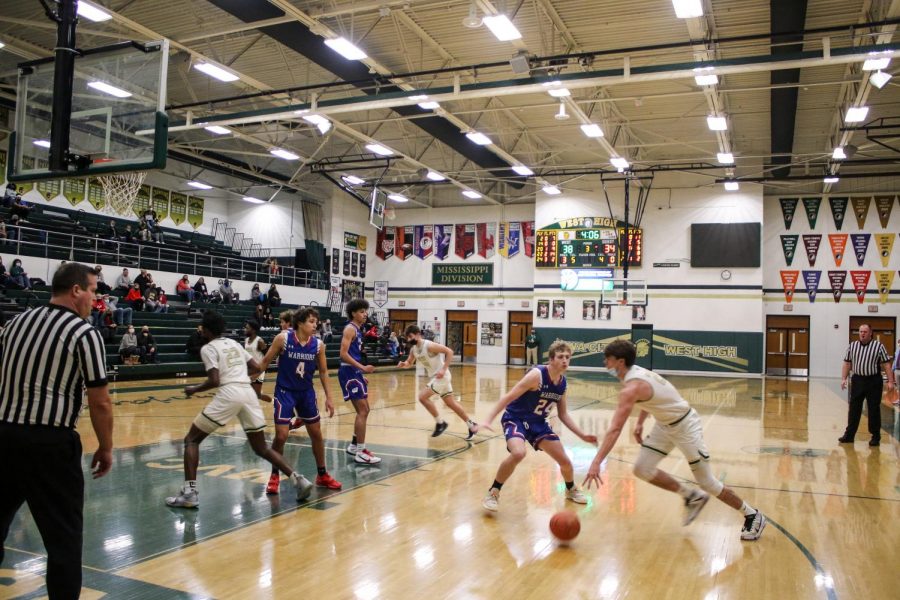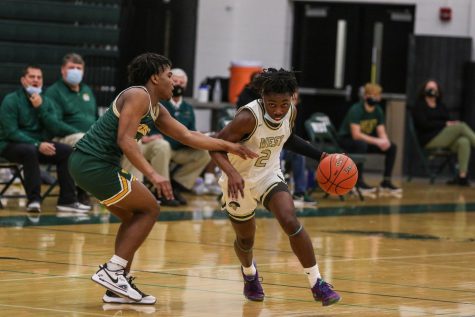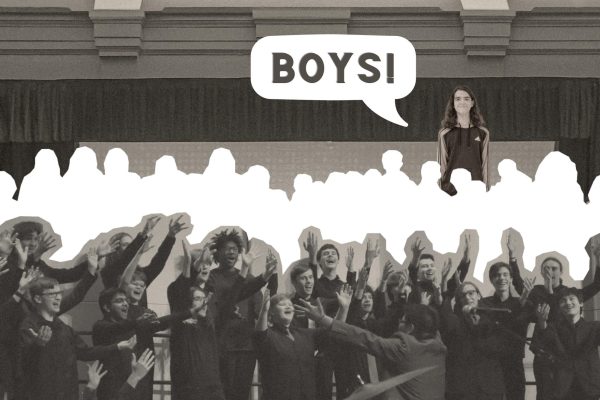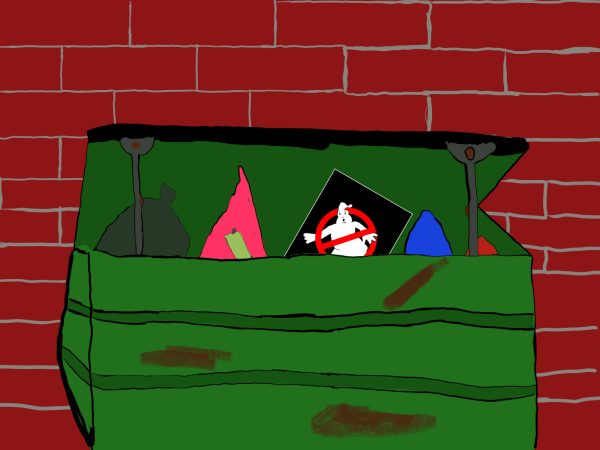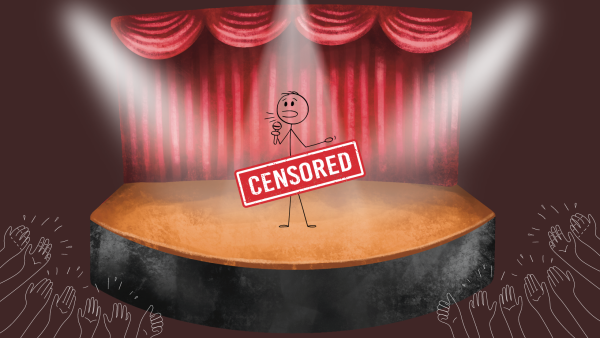Let the countdown begin
WSS Sports Editor Owen Aanestad ‘22 breaks down the pace of high school basketball and one of the association and union’s biggest problems: the lack of a shot clock.
Pete Moe ’22 drives past his defender into the lane against Cedar Rapids Washington on Feb. 16.
March 26, 2021
As one of the most unusual high school basketball seasons wraps up with all-state honors and season reviews, just one part of this year’s season felt reminiscent of years past: the absence of a shot clock in girls and boys high school basketball.
Every level following high school basketball across the nation plays with a 30-35 second countdown for each offensive possession to increase the pace of the game and encourage teams to score faster and more often. Iowa needs to make itself the tenth state in the nation to implement a shot clock in the near future with their student-athletes in mind.
A faster-paced game creates a more enjoyable and exciting experience for friends and family in the stands, but also higher scoring games for teams and their players. Eighty-six percent of the Trojan community polled via Instagram agreed in favor of adding a shot clock.
After being able to cover and witness a handful of high school basketball games in the state, I think both the union and the association need to work harder at urging the NFHS to move towards a state-to-state option in order to improve the game for high school athletes. Currently, nine states which include: Georgia, California, Maryland, Massachusetts, New York, North Dakota, Rhode Island, South Dakota and Washington have either a 30 or 35-second shot clock in both girls and boys basketball.
Especially in the 2020-2021 school year where student sections and fans, in general, were hard to come by, a quicker game filled with more opportunities to score can only bring more energy to the court.
In early 2020, the shot clock made its very first appearance in a boys basketball game with permission from both the IHSAA and the NFHS for experimental reasons at the Wells Fargo Advisors Shootout on the campus of Coe College in Cedar Rapids. The slate of games, which also included girls, gave high school coaches and players a taste of how a shot clock affected their game and if they would be open to adding one in the future. The 35-second shot clock received a majority of positive feedback in its debut.
Very exciting news. Appreciate the IAHSAA and the NFHS for giving the competing teams and fans the opportunity! @jeje66 @tonysroe @ScottUnash @KCRG_Sports @MatthewBain_ @MarkWoodleyTV @GBeckTV pic.twitter.com/rMyJSDvAjf
— WF Advisors Shootout (@WFAShootout) November 13, 2019
The pace of girls and boys basketball is far different at times, but I think that both would benefit from a shot clock in their game whether it is 30 or 35 seconds. Making coaches change their ways of falling back into a zone defense while the other team just runs out the clock can only improve the game as a whole.
If the IGHAU and the IHSAA were to act on the idea of adding a shot clock despite disagreeing with NFHS, one big aspect of the process would be getting schools across the state to purchase and install the technology. Clocks and horns to go on both ends of the floor could cost anywhere from 2-5 thousand dollars, but to the majority of athletic programs, a couple of thousand dollars as an investment is easy to come by.
Both the girls and boys governing groups want the best for their student-athletes in hopes of making their high school basketball experience something that they will never forget. If the union and association have their priorities on students and want to create a more enjoyable game, they need to take action on what Iowa high school basketball without a shot clock has really turned into.
Reason #235 of why Iowa High School basketball needs a shot clock @IHSAA pic.twitter.com/dwmpLM2eI9
— Cole Neary 🐶 (@cneary40) January 25, 2020
It’s no lie that when you are up by 10 with 3 minutes left in the fourth quarter and you know that your opponent could make a run, the majority of teams will slowly dribble the ball up the court and methodically look to run an offense in hopes of chewing up as much time as possible. West High’s own has taken advantage of the absence of a shot clock in high school basketball on some occasions. The problem is where it turns into not only a fourth-quarter strategy, but a game full of not so much basketball and more the childish game of keep-away as the team’s urge to score disappears.
Des Moines Christian did this for near an entire quarter tonight against Madrid.
This kind of philosophy is cheating the game of basketball and something needs to be done about it, because it’s inexcusable. pic.twitter.com/qde8GufCxP
— Quinn Douglas (@Quinn_Douglas_) December 16, 2020
There is only one way to prevent these types of games at the high school level and it’s a shot clock.


